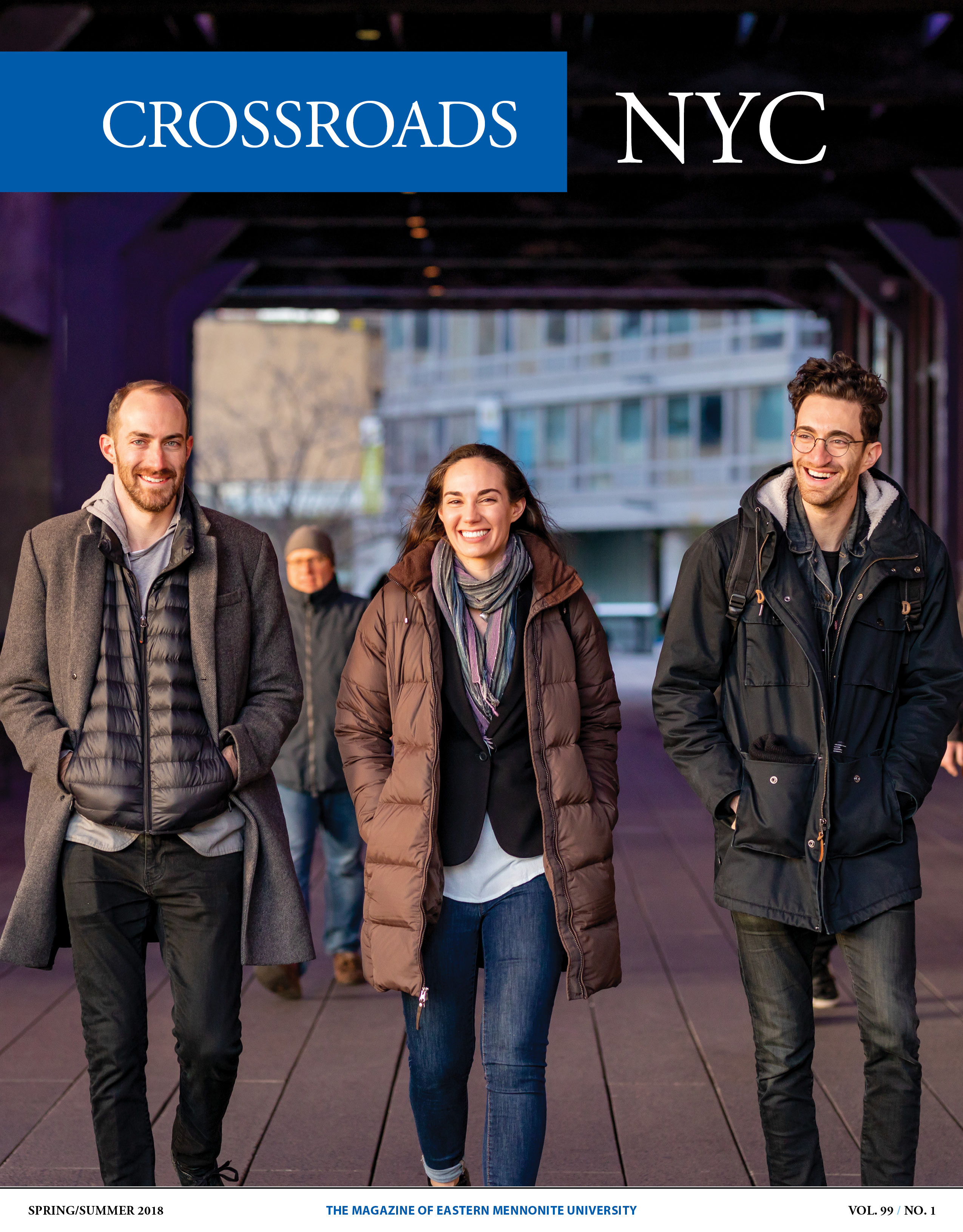
Danny Yoder ’06, outside his office building with the East River and Brooklyn Heights in the background. (Photo by Jon Styer)
IT’S EASY, Danny Yoder ’06 says, to let New York City be your entire world. Just traveling a few blocks can land you in what feels like a whole different city or country, with different ethnic foods, languages and people.
“You can actually taste things and meet people from all around the world, just a mile from home,” he said.
And to go that mile, you don’t have to drive a car, but can ride bicycle, or take public transit. Yoder and his wife Tara Kreider ’05, MA ’11 (counseling) do not own a car – and they feel freer for it, he said.
Yoder grew up in lower Delaware, a mile outside a small town, but he sees himself living in New York or another East Coast city long-term, where his career can have “broad impact.” From his office building in Lower Manhattan’s Financial District you can see not only streets but also the East River, a busy helipad and people moving all the time.
That’s his work, making sure people can get where they need to go as efficiently as possible. As a project manager in the Transit Development Group of the NYC Department of Transportation, he and his colleagues focus on the details of a massively complex system.
“Moving lots of people around is ultimately like a logic problem,” he said. “And when you change one thing, it has all these different impacts.”
For instance, an anticipated closure next year for 15 months to rehabilitate a subway tunnel damaged by the Hurricane Sandy means that each day, 275,000 people need to be rerouted to travel between Brooklyn and Manhattan. Planning how to move those people over streets instead of through their usual underground route, and doing so without snarling traffic, takes intersection-by-intersection analysis.
He’s not surprised that his philosophy and theology studies at EMU prepared him for this job. Several of his fellow city and regional planning graduate students at Rutgers University, too, had studied liberal arts.
“Transportation is technical, and you work with data and computer modeling to estimate the future,” he said. “But ultimately those models are based on assumptions, and so you have to look at everything with a critical eye and not just believe something that a computer model is telling you.”
And the questions really do extend into the philosophical: “How did we arrive here? What does this mean? What type of city do we want to have?”
Yoder’s appetite for street design formed after he’d graduated from EMU, gotten married, committed to being a one-vehicle household, and begun volunteering with the planning of the Northend Greenway pedestrian and bicycling avenue in Harrisonburg. That project, then in its early stages, gave him a glimpse into urban planning, and he started reading about the field.
He and Kreider also spent a year in Israel/Palestine, where in the West Bank Yoder observed what he describes as “weaponized urban planning” to make life difficult for Palestinians, such as checkpoints, settlements and roads that divide communities. That experience shaped his perspectives on U.S. infrastructure with its own – in some cases, ongoing – history.
“Everything from highway planning and construction to zoning has been, or still is, used as a tool to isolate black communities and segregate cities,” he said. “I like to think I approach urban planning with pure intentions, but it is important that urban planners are selfcritical and alert to ways that we might contribute to structural injustice.”
And so for Yoder in New York, “nonauto transportation” is not just about convenient possibilities: It’s also a matter of environmentalism and equity.
“If we grow as a city, we can’t just move more people in cars,” he said. “That would make the city less livable and more polluted. Good public transit is better for the planet and for the many people who either can’t afford cars or choose not to drive.”
